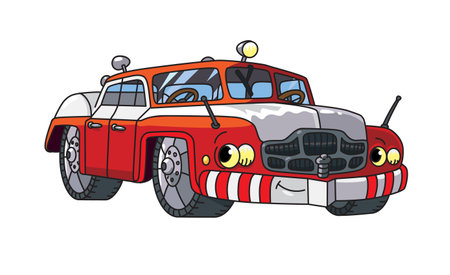Introduction to UK Driving Licence Classes
The United Kingdom has a well-structured driving licence system designed to ensure road safety and competency for all types of drivers. Unlike a one-size-fits-all approach, the UK’s system categorises licences into different classes based on the type and size of vehicle you wish to drive. This means that whether youre planning to drive a family car, a heavy goods vehicle, or even a moped, there are specific requirements and licences tailored for each category. The reason for having various licence classes is not just about regulation, but also about making sure every driver has the right knowledge and skills for their chosen vehicle. In this article, we’ll give you an overview of the main driving licence classes in the UK and explain what each one allows you to drive, helping you understand which licence suits your needs best.
2. Car Licence (Category B)
If you’re planning to get behind the wheel of a car in the UK, the Category B driving licence is what you’ll need. This is the standard car licence and it’s by far the most common for families and everyday drivers alike. With a full Category B licence, you can drive a wide variety of vehicles suitable for personal and family use. Here’s a breakdown of what you can legally drive with this licence:
| Vehicle Type | Maximum Permitted Weight | Seating Capacity | Additional Notes |
|---|---|---|---|
| Private cars (saloon, hatchback, estate, SUV) | Up to 3,500kg Maximum Authorised Mass (MAM) | Up to 8 passenger seats | Standard family cars and people carriers |
| Small vans | Up to 3,500kg MAM | N/A | Useful for moving house or carrying equipment |
| Towing a trailer | Car + trailer total up to 3,500kg MAM | N/A | Check DVLA rules for specifics on trailer weights and combinations |
| Automatic or manual transmission vehicles | N/A | N/A | If you pass your test in a manual car, you can drive both manual and automatics. If you pass in an automatic, you are limited to automatics only. |
It’s important to remember that driving a vehicle above these limits would require additional training and a different category on your licence. For most families and daily commuters, though, Category B covers everything needed—from school runs in an MPV to weekend trips in a hatchback. If you’re considering towing a caravan or heavier trailer for holidays, always double-check the combined weight doesn’t exceed the permitted limit. Finally, when choosing between automatic and manual transmission, keep in mind that passing your test in an automatic car means your licence will be restricted; many Brits opt for manual tests for maximum flexibility.

3. Motorcycle Licence (Categories A, A1, A2)
In the UK, motorcycle licences are divided into three main categories: A, A1, and A2. Each category has its own requirements and restrictions based on your age and the type of motorcycle you wish to ride. Understanding these differences will help you choose the right licence for your needs and ensure youre riding legally and safely.
Category A1
The A1 licence is available from the age of 17 and allows you to ride light motorcycles with an engine size up to 125cc, a power output not exceeding 11kW (about 14.6bhp), and a power-to-weight ratio no more than 0.1kW per kg. With an A1 licence, you can also ride motor tricycles with a power output not exceeding 15kW. This is a popular choice for younger riders or those looking for a practical way to commute around town.
Category A2
The A2 licence is designed for those aged 19 or over. It permits you to ride motorcycles with a power output up to 35kW (around 46.9bhp) and a power-to-weight ratio not more than 0.2kW per kg. While this covers a wide range of mid-sized bikes suitable for longer journeys or motorway riding, it does place some limitations on very powerful machines. After gaining experience on an A2 licence, many riders move on to the full Category A licence.
Category A
The Category A licence is the most comprehensive motorcycle licence available in the UK, often referred to as the ‘unrestricted’ licence. You can obtain this at age 24 via direct access, or at age 21 if you’ve held an A2 licence for two years (progressive access). With a Category A licence, there are no restrictions on engine size or power—you’re free to ride any motorcycle or scooter you choose, including high-performance superbikes or powerful touring machines.
Mopeds and Tricycles
If you’re interested in mopeds specifically, you can start riding them from age 16 with an AM moped licence (not covered in detail here but worth noting). Tricycles are generally included within the motorcycle categories but have specific rules if adapted for disability use.
Choosing the Right Motorcycle Licence
Your choice depends on your age, experience, and what sort of riding you plan to do—whether it’s city commuting on a lightweight scooter or weekend adventures on bigger bikes. Remember that all motorcycle licences require passing both theory and practical tests, and it’s important to wear appropriate safety gear at all times for your protection.
4. Lorry and Haulage Licences (Categories C, C1)
If you’re looking to get behind the wheel of a lorry or other large goods vehicle in the UK, you’ll need more than just a standard car licence. The UK driving licence system offers specific categories for those who want to operate vehicles designed for hauling heavier loads. Understanding the distinctions between Category C and C1 licences is essential for anyone considering a career in logistics, haulage, or even for personal use if you need to drive something bigger than a typical van.
What Are Lorry and Haulage Licences?
Lorry licences are split into different categories based on the weight of the vehicle you intend to drive. These are primarily:
| Licence Category | Vehicle Type | Maximum Authorised Mass (MAM) |
|---|---|---|
| C1 | Medium-sized vehicles | Between 3,500kg and 7,500kg |
| C | Large vehicles (lorries) | Over 3,500kg (no upper limit specified by category, but depends on vehicle specifications) |
The Differences Between C and C1 Licences
The key difference lies in the weight of the vehicle you’re permitted to drive. A C1 licence allows you to operate medium-sized lorries – often used by delivery companies or for moving house. If you want to drive full-size HGVs (Heavy Goods Vehicles), such as articulated lorries or large removal trucks, you’ll need a Category C licence.
C1 Licence Details
The C1 licence is particularly popular with tradespeople, small business owners, and those who drive ambulances or horseboxes. It’s also useful if you plan to tow a trailer up to 750kg with your medium-sized vehicle.
C Licence Details
The Category C licence is a must-have for professional drivers who work with haulage companies or manage larger-scale deliveries. With this licence, you can also tow a trailer up to 750kg in addition to the main vehicle.
Additional Endorsements: C+E and C1+E
If you wish to tow heavier trailers beyond the basic allowance, there are additional endorsements:
- C+E: Allows driving Category C vehicles with trailers over 750kg.
- C1+E: Permits driving Category C1 vehicles with heavier trailers.
Before applying for any of these licences, it’s important to meet age requirements and pass both theory and practical tests specific to each category. Whether you’re thinking about changing careers or expanding your driving skills for family or business needs, understanding these distinctions ensures you pick the right licence for your goals on Britain’s roads.
5. Bus and Minibus Licences (Categories D, D1)
For those interested in driving larger passenger vehicles in the UK, such as buses and minibuses, it’s important to understand the specific licence categories required. The main categories here are Category D and Category D1, both of which permit you to carry passengers but come with their own set of restrictions and requirements.
Category D1 – Minibuses
If you want to drive a minibus—that is, a vehicle designed to carry between 9 and 16 passengers—you’ll need a Category D1 licence. This category is particularly useful for community transport, school runs, or local group outings. However, there are some key conditions: you must be at least 21 years old and hold a full car (Category B) licence before applying for the D1 entitlement. If you gained your driving licence before 1 January 1997, you may already have D1(101), but this does not allow you to drive for hire or reward without further training.
Restrictions for D1 Licence Holders
With a standard D1 licence, you can drive a minibus with a trailer up to 750kg. If you wish to tow a heavier trailer, you’ll need the D1+E entitlement. Importantly, if you’re planning to drive commercially or charge passengers, additional Driver Certificate of Professional Competence (CPC) qualifications are required.
Category D – Buses
The Category D licence is necessary if you want to drive a bus with more than 16 passenger seats—typical for public transport or coach services across the UK. Applicants must be at least 24 years old (or 21 under certain training schemes) and already possess a full Category B car licence. Similar to minibuses, professional bus drivers must also complete the CPC training to ensure they meet safety and operational standards.
Key Points for Prospective Bus Drivers
Holding a Category D licence allows you to drive any size bus, including double-deckers and articulated vehicles, provided they are not used for transporting goods. As with minibuses, towing larger trailers will require the additional D+E entitlement. Regular medical checks and ongoing professional development through CPC courses are also mandatory for those driving buses as part of their job.
Whether you’re considering helping out your local community by driving a minibus or looking into a career as a professional bus driver, understanding these licence categories will help ensure you’re both legal and safe on the road.
6. Specialist Vehicle Licences
While standard car and motorcycle licences cover most everyday vehicles, there are several specialist vehicle licence categories in the UK designed for more specific purposes. These include permissions for towing larger trailers, driving agricultural machinery, and operating other unique vehicles that fall outside regular licence entitlements.
Towing Trailers and Caravans
If you plan to tow a caravan or trailer with your car, it’s essential to check what your current licence allows. For drivers who passed their test before 1 January 1997, the rules are more flexible, generally permitting heavier combinations of car and trailer. Those who passed after this date usually need to pass additional tests (the B+E category) to tow larger trailers legally. Always check your photocard or the DVLA website to be certain about what you’re allowed to tow.
Agricultural and Forestry Vehicles
Operating tractors, combine harvesters, or other specialist agricultural equipment requires a Category F licence. Most people can drive a tractor off-road from the age of 16, but using one on public roads comes with extra requirements and age restrictions. There are also dedicated categories for mowing machines and pedestrian-controlled vehicles (Categories K and L), which are common on farms and large estates.
Other Specialist Categories
The UK driving licence system also covers a few other niche vehicle types. For instance, Category G is required for road rollers, while Category H is necessary if you wish to drive tracked vehicles such as those used in construction. Each of these classes has its own minimum age requirements and may require practical tests or assessments depending on the vehicle’s use.
Things to Remember
If you need to drive any kind of specialist vehicle for work or personal use, always double-check the legal requirements beforehand. Fines and penalties can apply if you operate a vehicle without the correct entitlement, so staying informed is crucial—especially if your family life or job depends on getting behind the wheel of something out of the ordinary.
7. How to Apply and Upgrade Your Licence
If you’re ready to get behind the wheel or move up to a new class of vehicle, it’s essential to understand how the driving licence application and upgrade process works in the UK. Here’s some practical advice to help you navigate each step smoothly.
Applying for Your First UK Driving Licence
To apply for your first provisional driving licence, you’ll need to be at least 15 years and 9 months old, though you can’t start driving a car until you’re 17. Applications are usually made online via the official GOV.UK website. You’ll need proof of identity, addresses from the past three years, and a fee (usually paid by debit or credit card). Once approved, your provisional licence lets you start lessons with an approved instructor.
Upgrading Between Licence Classes
If you want to drive larger vehicles or tow trailers, you may need to upgrade your licence. For example, moving from a Category B (car) to C1 (medium-sized vehicles) or D1 (minibuses) requires additional tests and medical checks. Generally, you’ll need to:
- Meet the minimum age requirement for the category.
- Pass a medical examination (for many commercial classes).
- Apply for provisional entitlement for the new category using form D2 and possibly D4 (medical).
- Pass theory and practical tests specific to that vehicle type.
You can find full details and application forms on the GOV.UK driving licence categories page.
Renewals and Additional Endorsements
Some licence categories must be renewed more frequently than others—especially those involving professional or heavy vehicles. Keep an eye on expiry dates and make sure any necessary medicals or training are up to date before applying for renewal through the government portal.
Where to Find More Guidance
The UK government provides comprehensive information on all aspects of driving licences. The most reliable source is always the official GOV.UK driving licences section, where you’ll find detailed guides, downloadable forms, eligibility checklists, and up-to-date requirements for every class of licence.
Handy Tip for Families
If multiple family members are applying or upgrading at once, consider keeping a shared folder with scanned copies of documents and a calendar reminder for test dates or renewal deadlines—this helps avoid unnecessary stress down the line!


